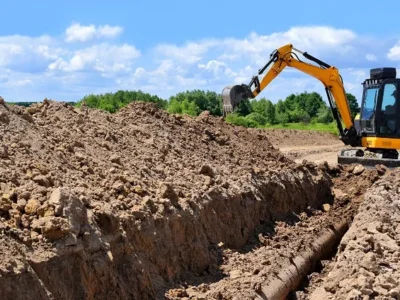Building inspectors possess a keen eye for detail, carefully assessing every aspect of a structure for potential issues. Their journey commences upon arrival at the property, where they meticulously scrutinize the exterior for indications of deterioration, harm, or possible breaches of building codes. From evaluating the state of the roof and siding to examining the foundation and grading surrounding the building, they leave no area uninspected. This expertise demands a blend of technical expertise and hands-on practice, as even minor observations can uncover substantial underlying concerns.
Uncovering the unseen
As the inspection progresses, the adventure takes inspectors deep into the heart of the building, where they employ a variety of specialized tools and techniques to uncover hidden problems. Moisture meters, infrared cameras, and even drones are utilized to detect issues that might not be immediately visible to the naked eye. The common challenge inspectors face is the presence of water damage. A seemingly harmless water stain on a ceiling could be a clue to a much larger problem, such as a leaky roof or plumbing issue. It’s the inspector’s job to investigate these clues and trace them back to their source, much like a detective following a trail of evidence.
Structural sleuthing
From the foundation to the framing and load-bearing walls, inspectors must ensure that the building is structurally sound and free from any significant defects or issues. This part of the adventure often requires a keen eye and a deep understanding of construction principles. Inspectors may need to investigate potential signs of settlement, cracking, or other structural concerns, using specialized tools and techniques to gather data and make informed assessments. In some cases, the structural sleuthing may even lead to the involvement of additional experts, such as structural engineers or geotechnical professionals, further enhancing the adventure and ensuring a comprehensive evaluation.
Electrical and plumbing puzzles
No building inspection adventure would be complete without delving into the complex world of electrical and plumbing systems. These vital components are a source of significant issues if not properly installed or maintained, posing potential safety hazards and costly repair bills. During the inspection, inspectors will closely examine the electrical panel, wiring, outlets, and fixtures, ensuring compliance with current codes and checking for any signs of overloading or hazardous conditions. Similarly, they’ll evaluate the plumbing system, including pipes, fixtures, and drainage, looking for leaks, clogs, or other potential problems.
Solving these electrical and plumbing puzzles requires a combination of technical knowledge, problem-solving skills, and a willingness to dig deeper when necessary. It’s an adventure that often leads inspectors into cramped crawl spaces, attics, and other tight spaces, where they must navigate obstacles and overcome challenges to get to the heart of the issue. For a complete list of details, look at here now.
Environmental concerns
In addition to the structural, electrical, and plumbing aspects of a building inspection, inspectors must also be on the lookout for potential environmental hazards. These include issues such as mold, asbestos, radon gas, or lead-based paint, all of which can pose significant health risks if left unaddressed. Uncovering these environmental concerns is a critical part of the inspection adventure, as they often are hidden from plain sight or require specialized testing and analysis. Inspectors must be trained to recognize the signs and symptoms of these hazards and take appropriate action to ensure the safety of occupants. This part of the adventure may involve collaborating with environmental specialists, conducting air quality tests, or even taking samples for laboratory analysis. It’s a testament to the inspector’s commitment to uncovering all potential issues, no matter how elusive or complex they may be.













Comments